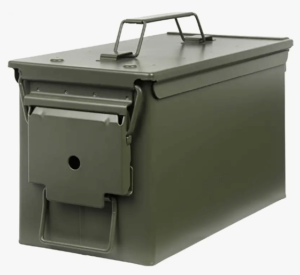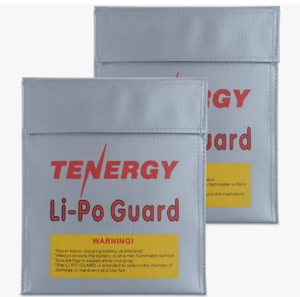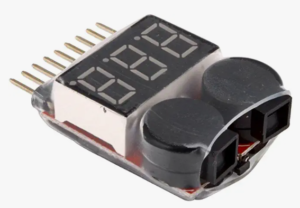If you’re an RC enthusiast, you’ll likely have a large collection of Lipo batteries. But when these batteries are not in use, how should you store them? And what is the ideal storage voltage for Lipo batteries? This article aims to answer all your questions about RC Lipo battery storage.
What is the best storage voltage for Lipo batteries?
First and foremost, you should never store them fully charged. For Lipo batteries that will not be used for an extended period, such as over a month, the recommended storage voltage is 3.8v per cell. For batteries that will not be used for a shorter time, like once a week, a storage voltage range of 3.7v to 3.9v per cell is acceptable.
It’s important to note that when we talk about the storage voltage of 3.8v, we’re referring to the voltage of a single battery cell.
Therefore, the optimal long-term storage voltage for a 1s battery is 3.8v, while the short-term storage voltage is between 3.7v and 3.9v.
For 2s Lipo batteries, the ideal long-term storage voltage is 7.6v (3.8v x 2), with a short-term storage voltage range of 7.4v to 7.8v.
Similarly, the long-term storage voltage for 3s Lipo batteries is 11.4v (3.8v x 3), while the short-term range is between 11.1v and 11.7v.
For 4s Lipo batteries, the optimal long-term storage voltage is 15.2v (3.8v x 4), with a short-term range of 14.8v to 15.6v.
Finally, for 6s Lipo batteries, the recommended long-term storage voltage is 22.8v (3.8v x 6), with a short-term range of 22.2v to 23.4v.
Here is a table summarizing the recommended storage voltages for Lipo batteries of 1s to 6s, both for long-term and short-term storage:
How often should you check the voltage of your RC Lipo batteries?
For batteries that are not used regularly, it’s recommended to check their voltage every three months.
How can they be safely stored? Can Lipo batteries be stored at home or in a warehouse?
Lipo batteries can be stored at home or in a warehouse, but in order to store them safely, the following points should be taken into consideration:
When it comes to storing your Lipo batteries, you want to make sure you do it safely. Here are some tips to keep in mind:
- Do not store your batteries fully charged. The ideal storage voltage for each cell is 3.8 volts. Store them in a place that’s not prone to fires.
- The best storage temperature range is between 0 and 25 degrees Celsius.
- Keep your batteries in a well-ventilated, dry area to prevent moisture damage.
- Avoid storing them in direct sunlight, near heat sources or in high-temperature environments.
- Disconnect the batteries from your RC devices before storage.
- Keep them away from flammable or explosive materials, such as lighters.
- If possible, store your Lipo batteries in a fire proof metal ammo box, LiPo safety bag, or other fire proof container, with different capacity batteries stored separately.
- Check your battery voltage every three months.
- If your Lipo battery is severely puffy, it cannot be used and should be disposed of immediately.
By following these simple guidelines, you can help ensure the safety and longevity of your Lipo batteries.
How to dispose of unwanted RC LiPo batteries?
It’s crucial to handle them safely and responsibly to avoid environmental pollution and fire hazards.
If you have puffy or damaged RC LiPo batteries that you no longer need, it’s best to take them to a specialized battery recycling point or send them to a battery company that specializes in LiPo battery recycling. Don’t throw them directly into the trash bin!
Can RC LiPo batteries be stored in a car?
When storing LiPo batteries in a car, be sure to use a fireproof bag and avoid leaving them inside the vehicle for long periods, especially in high temperatures. Disconnect the batteries from your RC car and remove them from the car when you’re not using it.
High temperatures inside the car, especially during hot summer days, can cause the internal temperature of the LiPo batteries to rise, damaging them and increasing the risk of self-ignition.
How to carry RC LiPo batteries while traveling?
If you’re planning to travel with RC LiPo batteries, make sure you check the transportation company’s regulations in advance. Most companies require LiPo batteries to meet specific transportation requirements. Don’t forget to consult relevant personnel for the most up-to-date safety regulations.
By following these safety tips, you can dispose of unwanted LiPo batteries and transport them safely while minimizing the risk of fire hazards and environmental pollution.
How to charge LiPo batteries safely?
Charging LiPo batteries requires careful attention to safety.
First and foremost, never use a damaged or puffy battery for any purpose.
Always choose a qualified charger, such as the HOTA D6pro, and make sure not to exceed the maximum charging current specified on the battery packaging.
To further minimize risk, consider using a fireproof bag to charge the battery, and be sure to purchase high-quality, reliable LiPo batteries from reputable sources.
It’s also important to have someone keep an eye on the charging process, as even the best equipment and batteries can still pose some risk.
Finally, always charge your LiPo battery in a well-ventilated area that is free from flammable or explosive materials.
By following these guidelines, you can safely and effectively charge your LiPo batteries.
How to check the voltage of an RC LiPo battery?
To check the voltage of an RC LiPo battery, there are a few options. One way is to use a charger: simply plug the balance connector of the battery into the balance port of the charger, and you’ll be able to read the voltage. Some chargers, such as the D6pro, can display the voltage of each individual cell of the battery.
Another method is to use a lipo voltage checker, which allows you to check the voltage of each cell of the battery separately.
In addition, some advanced receivers and controllers can also provide you with information about the battery’s voltage.
How to safely discharge your LiPo battery?
If you need to safely discharge your LiPo battery before storing it, there are a few methods you can use.
One option is to use the storage feature on your charger, which will automatically discharge the battery.
Alternatively, you can use a specialized discharge device for more precise control.
Another easy way to discharge your battery is to simply use your RC vehicle.
It’s important to avoid storing your RC LiPo battery when it’s fully charged, as this can cause damage if left for more than a day or two.
Instead, store it at 3.8v per cell. This will help to prolong the life of your battery and ensure that it’s ready to go when you need it.
What’s the lowest voltage at which LiPo batteries are safe to use?
The safe minimum voltage for RC LiPo batteries is 3.2 volts. If the battery drops below this level, it could potentially cause irreversible damage.
What’s the best thing to store LiPo batteries in?
It’s recommended that you store LiPo batteries in a fireproof safety bag or metal ammo box, and follow the safety precautions mentioned above for specific storage conditions.
Is there a risk of LiPo batteries catching fire when not in use?
Although it’s possible, the probability is relatively low. LiPo batteries are more likely to catch fire during charging or use.
The risk of fire is smaller under normal storage conditions, but if your storage location is unsafe due to high temperature, exposure to sunlight, or moisture, there could be a risk.
For safe storage of LiPo batteries, please refer to the instructions mentioned above, and consider using an explosion-proof box or bag to store them.








Recent Comments